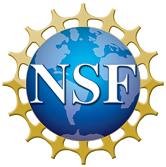The following is a special contribution to this blog by Keith Marzullo, division director for the National Science Foundation’s (NSF) Division of Computer and Network Systems (CNS).
 Yesterday, the National Science Foundation (NSF) announced a new partnership with the U.S. Department of Homeland Security Science and Technology Directorate (DHS S&T) and U.S. Department of Transportation (DOT) Federal Highway Administration (FHWA), issuing a first-ever interagency solicitation for Cyber-Physical Systems (CPS). Leveraging years of investment in CPS science, engineering, and technology by NSF’s Directorates for Computer and Information Science and Engineering (CISE) and Engineering (ENG), the new solicitation establishes collaborations between NSF and mission agencies to “identify basic research needs in CPS common across multiple application domains.”
Yesterday, the National Science Foundation (NSF) announced a new partnership with the U.S. Department of Homeland Security Science and Technology Directorate (DHS S&T) and U.S. Department of Transportation (DOT) Federal Highway Administration (FHWA), issuing a first-ever interagency solicitation for Cyber-Physical Systems (CPS). Leveraging years of investment in CPS science, engineering, and technology by NSF’s Directorates for Computer and Information Science and Engineering (CISE) and Engineering (ENG), the new solicitation establishes collaborations between NSF and mission agencies to “identify basic research needs in CPS common across multiple application domains.”
From the official solicitation:
In 2014, NSF is working closely with multiple agencies of the federal government, including the U.S. Department of Homeland (DHS) Security Science and Technology Directorate (S&T), U.S. Department of Transportation (DOT) Federal Highway Administration (FHWA) and, through FHWA, U.S. DOT Intelligent Transportation Systems (ITS) Joint Program Office (JPO), to identify basic research needs in CPS common across multiple application domains, along with opportunities for accelerated transition to practice.
This year’s CPS solicitation builds upon the program’s long history of seeking to establish the scientific foundations and engineering principles needed to realize cyber-physical systems with capability and dependability far beyond what we are able to achieve today, by (a) taking a coordinated approach that balances theory with experimentation, and systematic advances with revolutionary breakthroughs; (b) seeking cross-disciplinary collaborative research that will lead to new fundamental insights; (c) encouraging empirical validation of new concepts through research prototypes, ranging from component devices to entire systems; and (d) aiming to identify promising innovations that have the potential of immediate practical applications, supporting transitioning such innovations to practice.
Among the foundational issues that are central across CPS applications are:
- System Design — How do we design CPS to be safe, secure, and resilient in a variety of unanticipated and rapidly evolving environments and disturbances? How do we integrate privacy and security into CPS design?
- System Verification — How do we develop effective metrics and methods to rapidly verify and certify very large and complex CPS? What technologies enable incremental certification? How can we preserve safety yet dramatically reduce the “test space” when it comes to manned, unmanned, and mixed authority systems spanning a variety of disciplines?
- Real-time Control and Adaptation — How do we achieve real-time dynamic control and behavior adaptation in a diversity of environments such as clouds, as well as in network-challenged spaces? How can CPS leverage “big data” in real-time control?
- Manufacturing — How can communication, computation, and control be harnessed to provide expanded and effective access to means of conceiving of new products, reducing product concepts to realizable designs, and producing integrated software-hardware systems at a pace far exceeding today’s timelines?
The new CPS solicitation includes, for the first time, an option enabling support of accelerated maturation, demonstration, and transition to practice of research results:
Proposals for Breakthrough, Synergy, or Frontier projects may include a Transition to Practice (TTP) option… The TTP option is meant to support the leveraging of proposed research activities and ideas whose outcomes at the end of the award are capable of being implemented, matured, applied, experimentally useable, or demonstrated as a useable capability. This option should describe how successful research results are to be further developed, matured and experimentally deployed in organizations or industries, including in networks and end systems.
Furthermore, the solicitation encourages the utilization of both academic and industrial testbeds that can integrate research components:
…[Effective] use of testbeds can spur innovations and accelerate research by providing scalable and open environments for experimentation. If applicable, researchers should consider using testbeds that include virtual simulation environments for early experimentation, higher fidelity hardware-in-the-loop environments and live platforms. The program strongly encourages proposers to include in their proposals how their research may take advantage of such testbeds as means for experimental validation and maturation in realistic environments.
The solicitation calls for the same three types of research and education projects – differing in scope and goals – as before:
- Breakthrough projects must offer a significant advance in fundamental CPS science, engineering and/or technology that has the potential to change the field. This category focuses on new approaches to bridge computing, communication, and control. Funding for Breakthrough projects may be requested for a total of up to $500,000 for a period of up to 3 years.
- Synergy projects must demonstrate innovation at the intersection of multiple disciplines, to accomplish a clear goal that requires an integrated perspective spanning the disciplines. Funding for Synergy projects may be requested for a total of $500,001 to $1,000,000 for a period of 3 to 4 years. [Please note that a change from last year’s solicitation is that Synergy project proposals now may not exceed 15 pages in length.]
- Frontier projects must address clearly identified critical CPS challenges that cannot be achieved by a set of smaller projects. Funding may be requested for a total of $1,000,001 to $7,000,000 for a period of 4 to 5 years.
The window for full proposal submission is May 17-June 2, 2014.
We are excited about this new collaboration with DHS S&T and DOT FHWA, and we look forward to receiving proposals from the research community. To learn more about the CPS program, please see the full solicitation, or contact a cognizant program officer.









